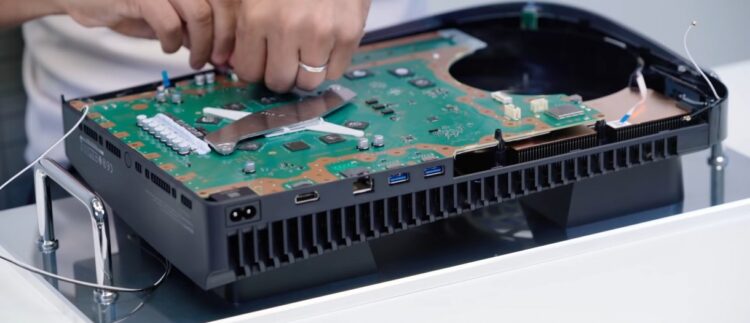The PlayStation 5 (PS5) is the latest gaming console from Sony, and it has been making waves in the gaming community since its release. One of the most talked-about features of the PS5 is its use of liquid metal as a thermal interface material (TIM) between the CPU and heatsink.
In this article, we will explore what liquid metal is, how it works, and why it is a game-changer for the PS5.
What is Liquid Metal?
Liquid metal is a thermal interface material that is used to transfer heat from one surface to another. It is made up of a mixture of metals, including gallium, indium, and tin.
These metals have a low melting point and are able to flow like a liquid at room temperature. This makes them an excellent choice for use as a TIM.
How Does Liquid Metal Work?
Liquid metal works by filling in the microscopic gaps between the CPU and heatsink. This allows for better heat transfer between the two surfaces, which results in lower temperatures and better performance.
Liquid metal also has a higher thermal conductivity than traditional TIMs, which means it can transfer heat more efficiently.
Why is Liquid Metal a Game-Changer for the PS5?
The PS5 is a powerful gaming console that generates a lot of heat. In order to keep the system running smoothly, it needs an effective cooling system. By using liquid metal as a TIM, Sony has been able to achieve better thermal performance than previous generations of consoles. This means that the PS5 can run cooler and quieter than its predecessors, which is great news for gamers who want to enjoy their favorite games without any distractions.
What are the Benefits of Liquid Metal?
There are several benefits to using liquid metal as a TIM. First and foremost, it provides better thermal performance than traditional TIMs. This means that it can transfer heat more efficiently, which results in lower temperatures and better performance.
Liquid metal is also more durable than traditional TIMs, which means it can last longer without needing to be replaced.
Are There Any Downsides to Using Liquid Metal?
While liquid metal has many benefits, there are also some downsides to using it as a TIM. One of the biggest concerns is that it can be difficult to apply correctly.
Liquid metal is highly conductive, which means that it can cause short circuits if it comes into contact with other components. This means that it needs to be applied carefully and with precision.
How Do You Apply Liquid Metal?
If you are planning to apply liquid metal to your PS5, it is important to follow the instructions carefully. First, you will need to remove the heatsink from the CPU. Then, you will need to clean both surfaces thoroughly to remove any old TIM or debris.
Once the surfaces are clean, you can apply a small amount of liquid metal to the center of the CPU. Be sure to spread it evenly using a small brush or applicator. Finally, reattach the heatsink and turn on your PS5 to make sure everything is working properly.
Is Liquid Metal Safe?
Liquid metal is generally safe to use as a TIM, but it does come with some risks. As mentioned earlier, liquid metal is highly conductive, which means that it can cause short circuits if it comes into contact with other components.
It is also corrosive, which means that it can damage certain materials over time. If you are planning to use liquid metal, it is important to take the necessary precautions and follow the instructions carefully.
Conclusion
In conclusion, liquid metal is a game-changer for the PS5. By using this advanced thermal interface material, Sony has been able to achieve better thermal performance than previous generations of consoles.
While there are some risks associated with using liquid metal, the benefits are clear. If you are planning to apply liquid metal to your PS5, be sure to follow the instructions carefully and take the necessary precautions to ensure a safe and successful installation.



